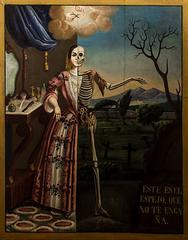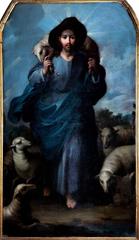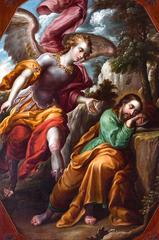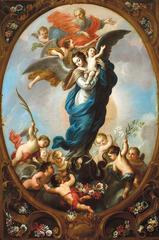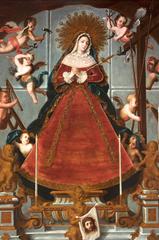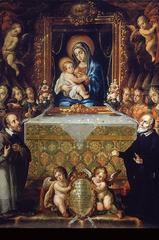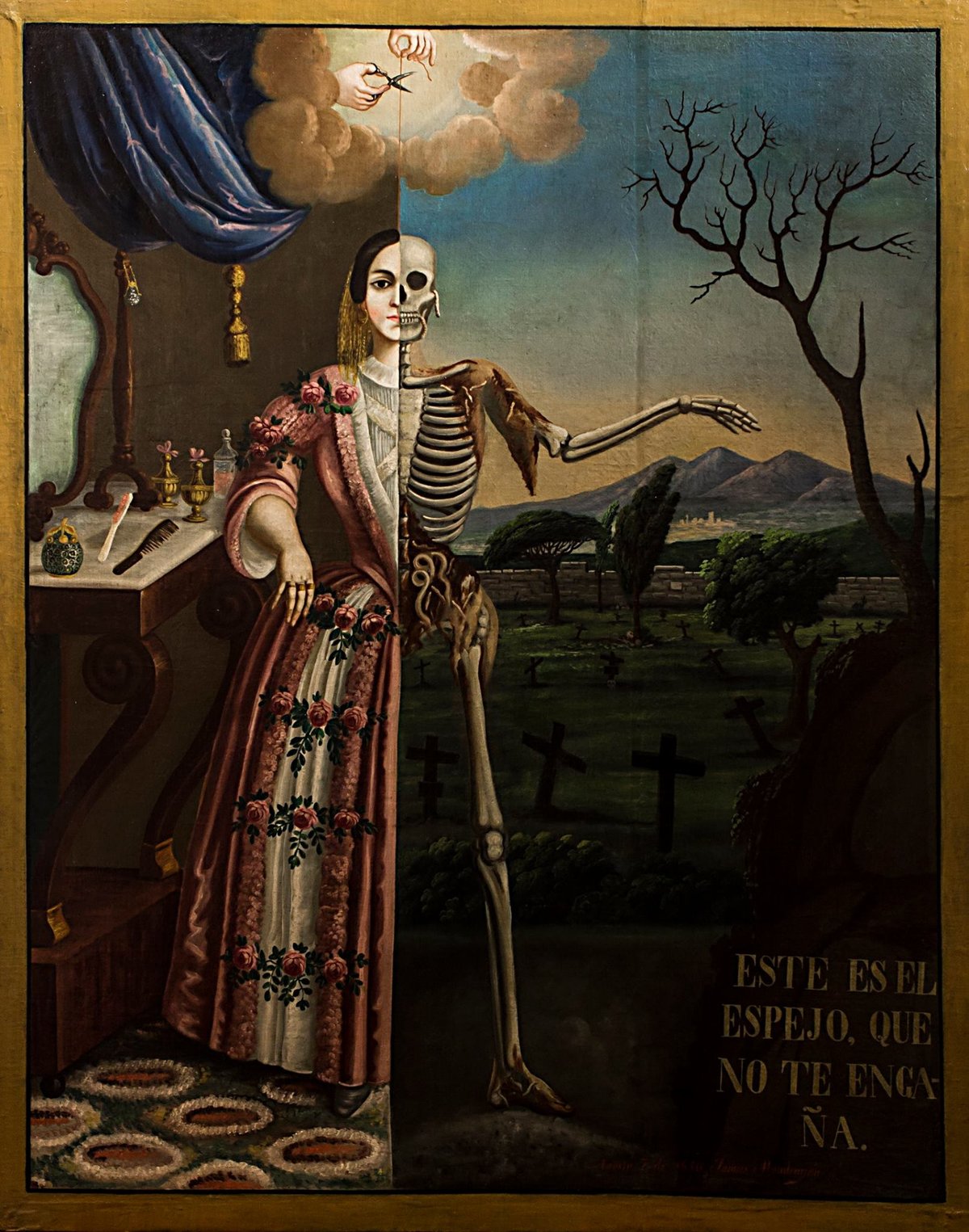
Temple of San Felipe Neri “La Profesa”: Visiting Hours, Tickets, and Historical Significance in Mexico City
Date: 14/06/2025
Introduction
The Temple of San Felipe Neri, widely known as “La Profesa,” is one of Mexico City’s most iconic and historically significant religious landmarks. Founded by the Jesuits in the late 16th century and completed in the early 17th, La Profesa is a living testament to the city’s evolving religious, artistic, and political landscape. Located at the intersection of Madero and Isabel la Católica streets in the heart of the Centro Histórico, its ornate Baroque architecture and rich art collections attract visitors interested in Mexico’s colonial legacy and ongoing cultural vibrancy. The temple has witnessed pivotal moments in Mexican history, such as the La Profesa Conspiracy and the Polkos Rebellion, and continues to serve as a spiritual, artistic, and community hub.
This comprehensive guide explores La Profesa’s history, architectural evolution, artistic treasures, visiting logistics, and tips for an enriching experience. Whether you are a history enthusiast, art lover, or traveler seeking the city’s cultural heart, La Profesa is a must-see destination in Mexico City.
More details can be found at Tripomatic, Programadestinosmexico, and Mexico Historico.
Table of Contents
- Historical Overview
- Visiting La Profesa: Practical Information
- Nearby Attractions and Suggested Itineraries
- FAQs
- Summary and Visiting Tips
- References
Historical Overview
Origins and Foundation
La Profesa’s origins date to the late 16th century, when the Jesuits established a church and residence for professed members in New Spain. The first structure, known as “La Iglesia de la Casa Profesa,” was completed in the early 17th century and strategically located in what is now the city’s historic core (Tripomatic). The adjacent Casa Profesa served as the Jesuit headquarters, solidifying the church’s role as both a spiritual center and a hub for intellectual activity.
Architectural Evolution
Early Baroque to High Baroque
The original church reflected a moderate Baroque style with restrained ornamentation. By the early 18th century, architect Pedro de Arrieta was commissioned to design an expanded temple, completed in 1720 (Programadestinosmexico). The new structure features an elaborate Baroque façade, three wide naves, and vaults supported by robust columns. Manuel Tolsá’s late 18th-century altar and dome decorations by Academy of San Carlos artists further elevated the temple’s artistic profile.
Artistic Treasures and the Pinacoteca
La Profesa is renowned not only for its architecture but also as a repository of colonial and post-colonial art. The attached Pinacoteca de la Profesa contains over 450 paintings, organized thematically from the 17th to the 20th centuries, featuring works by masters such as Juan Correa and Cristóbal de Villalpando (Programadestinosmexico; Evendo). The church’s interior showcases ornate altarpieces, chapels, and woodwork, making it a living museum of sacred art.
Shifts in Ownership and Use
In 1767, the Jesuits were expelled by King Charles III, and the church passed to the Oratory of San Felipe Neri. Though officially renamed San José el Real, it retained its popular moniker, “La Profesa.” The Oratorians preserved its religious and cultural functions (Programadestinosmexico). The Reform Laws of 1861 led to its temporary closure and the demolition of the Oratory House, but the church survived and reopened, continuing as a prominent cultural and spiritual site.
Cultural and Political Significance
La Profesa was the setting for the “La Profesa Conspiracy” (1820–1821), a clandestine gathering of conservative elites that played a decisive role in Mexican independence (Tripomatic). It was also pivotal during the 1847 Polkos Rebellion, when the church became a meeting point for rebels during the U.S. invasion. These episodes underscore La Profesa’s importance beyond religion, positioning it at the crossroads of Mexican political history.
Syncretism and Artistic Identity
La Profesa’s architecture and art reflect a unique fusion of indigenous and Spanish traditions. The use of stones from pre-Hispanic Aztec structures in its foundations symbolizes the city’s layered history (Mexico Historico). Baroque motifs blend with indigenous artistic techniques, and floral patterns echo pre-Columbian aesthetics—a hallmark of Mexican religious architecture.
The church remains a vibrant center for religious festivals, rites of passage, and civic ceremonies, hosting events that blend Spanish and indigenous customs. It also continues its tradition of daily Masses, confessions, and prayer services, with a focus on the Oratorian values of personal holiness and community service. Devotional practices, including the veneration of San Felipe Neri, are central to its spiritual life.
Visiting La Profesa: Practical Information
Location and Accessibility
La Profesa is located at Isabel la Católica 33, Centro Histórico, Cuauhtémoc, 06000 Ciudad de México, CDMX, Mexico (Google Maps). It is easily accessible by public transit—Bellas Artes and Allende metro stations are nearby, and several bus routes serve the area. Taxis and ride-sharing services can drop you off at the entrance.
Visiting Hours and Tickets
- Regular Hours: Daily from 8:00 AM to 8:00 PM (hours may vary during religious holidays and special events; verify with the official Archdiocese website or parish office).
- Admission: Free for general entry. Donations are appreciated.
- Pinacoteca Access: A small fee (approx. 50 MXN) may apply for the art gallery. Discounts available for students and seniors. Tickets can be purchased onsite or online.
Guided Tours
- Guided tours are available and recommended for deeper insights into the church’s history and art. Tours are offered in Spanish and sometimes English and can be booked through the parish office or reputable tour operators like Mexico a Pie and Estación México.
- Tours typically run at 11:00 AM and 3:00 PM. Check for availability and language options.
Accessibility
- The main entrance is at street level, but some areas have steps and uneven flooring. Partial wheelchair access is available; contact the parish office for assistance.
- No dedicated accessible restrooms onsite; nearby restaurants and shopping centers offer facilities.
Visitor Etiquette
- Dress modestly (cover shoulders and knees) and behave respectfully.
- Photography is allowed in public areas without flash or tripods; no photography during Mass or in restricted areas.
- Remain quiet and avoid crossing the central aisle during services.
Facilities
- No restrooms in the church; use facilities in nearby cafes or shops.
- No café or gift shop onsite. The surrounding area has ample food and souvenir options.
- Seating is available in pews; bring your own water as none is provided.
Safety
- The Centro Histórico is busy with a visible police presence. Watch for pickpockets, especially during crowded events.
- Avoid displaying valuables and keep belongings secure.
Best Times to Visit
- Weekday mornings offer the quietest experience.
- Weekends and feast days are lively but more crowded.
- May (San Felipe Neri’s feast) and November (All Souls) feature special events (CDMX Tourism).
Nearby Attractions and Suggested Itineraries
La Profesa’s location makes it ideal for exploring the Centro Histórico. After visiting, stroll down Madero Street to the Zócalo, stop by the Palacio de Bellas Artes, or visit the Museo Nacional de Arte. The Metropolitan Cathedral and Templo Mayor are within easy walking distance, enabling a full day of cultural discovery.
Suggested itinerary: Start at La Profesa, explore Madero Street, have lunch at a local café, then visit the nearby museums and landmarks.
Religious Services and Special Events
- Mass is celebrated daily (schedule posted at the entrance and on the parish Facebook page).
- Services are in Spanish; all are welcome.
- Weddings, baptisms, and major feast days may affect access to certain areas.
- Major festivals feature floral decorations and music performances.
Photography and Filming
- Personal photography is permitted in public areas (no flash/tripods).
- Professional photography/filming requires prior permission from the parish office.
- Be respectful of worshippers and avoid photographing people during services.
Health and Safety
- COVID-19 restrictions have been lifted, but check Mexico City’s official site for updates.
- Masks recommended during crowded events; hand sanitizer may be available.
Language
- Spanish is the primary language. Limited English signage.
- Many local guides are bilingual; translation apps are useful.
Frequently Asked Questions (FAQ)
Q: What are the visiting hours?
A: Daily, 8:00 AM–8:00 PM; check for special event changes.
Q: Is there an entrance fee?
A: Admission is free. Donations are appreciated. The Pinacoteca may have a small fee.
Q: Are guided tours available?
A: Yes, in Spanish and sometimes English. Book onsite or via local operators.
Q: Is the church accessible for people with disabilities?
A: Partial accessibility; contact the parish for more info.
Q: Can I take photos?
A: Yes, in public areas, without flash or tripods. Professional photography needs permission.
Q: Are there restrooms on-site?
A: No; use nearby commercial facilities.
Summary and Visiting Tips
A visit to the Temple of San Felipe Neri “La Profesa” offers a profound journey into the heart of Mexico City’s spiritual, artistic, and historical traditions. With its free admission, central location, and remarkable art and architecture, it is an essential stop for anyone exploring the Centro Histórico. To enhance your experience:
- Visit during quiet weekday mornings or plan around major festivals for a vibrant atmosphere.
- Dress modestly and respect religious practices.
- Consider a guided tour for deeper historical insight.
- Use the [Audiala app] for audio tours and cultural context.
- Combine your visit with other nearby attractions for a comprehensive cultural day.
Stay updated via the temple’s Facebook page and the official tourism portal.
